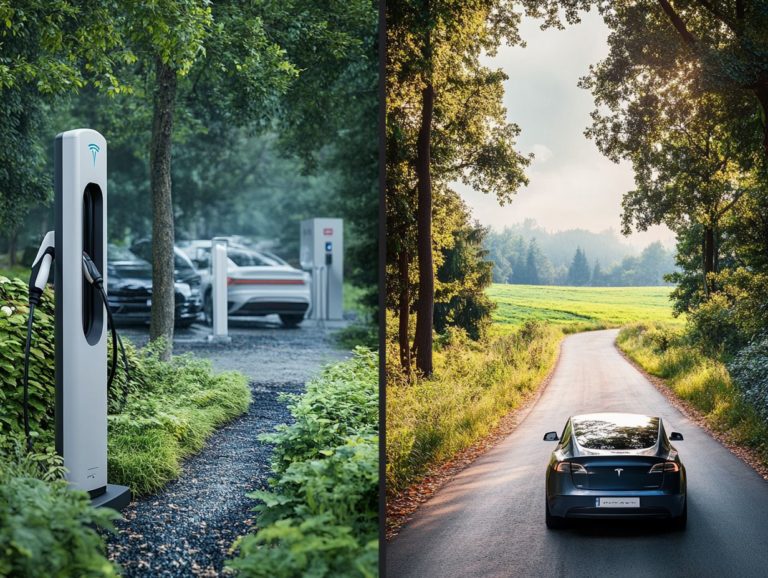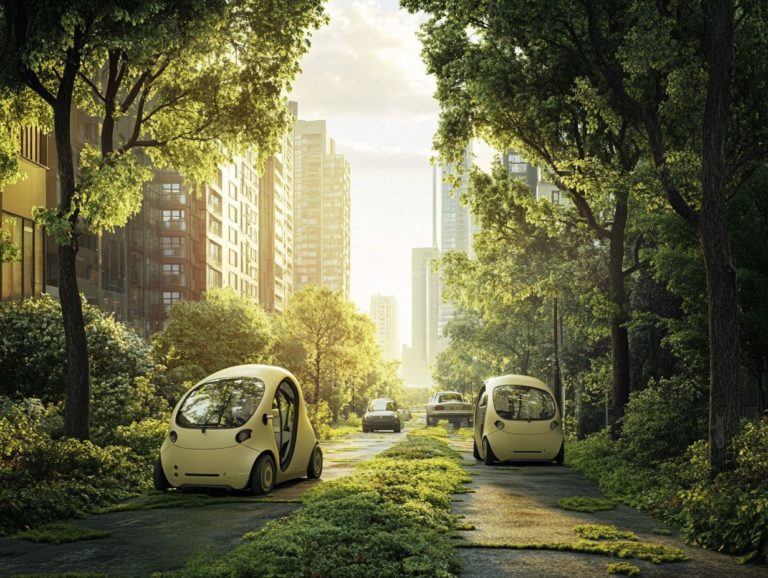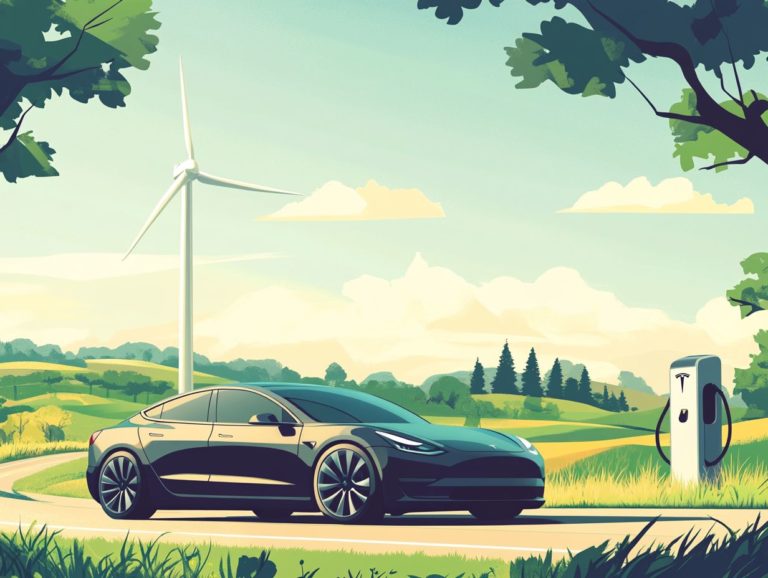Understanding the Environmental Impact of EV Charging
As electric vehicles (EVs) gain traction, the significance of EV charging cannot be overstated.
This article delves into the environmental impact of EV charging, illustrating how it contributes to emission reductions and lessens your carbon footprint.
You ll discover the various types of charging Level 1, Level 2, and DC fast charging along with the challenges each presents.
We also explore the factors that influence their environmental footprint and highlight innovative solutions designed to enhance sustainability.
Get ready to explore the fascinating world of EV charging and its crucial role in building a greener future!
Contents
- Key Takeaways:
- Environmental Impact of EV Charging
- Types of EV Charging
- Factors Affecting Environmental Impact
- Source of Electricity and Charging Infrastructure
- Improving the Sustainability of EV Charging
- Innovations and Solutions
- Frequently Asked Questions
- What is the environmental impact of EV charging?
- How does charging an EV affect air quality?
- What is the difference between charging an EV at home and at a public charging station?
- Can EV charging increase the demand for electricity?
- Are there any benefits to the environment from using EVs?
- What is the lifecycle environmental impact of EVs?
Key Takeaways:
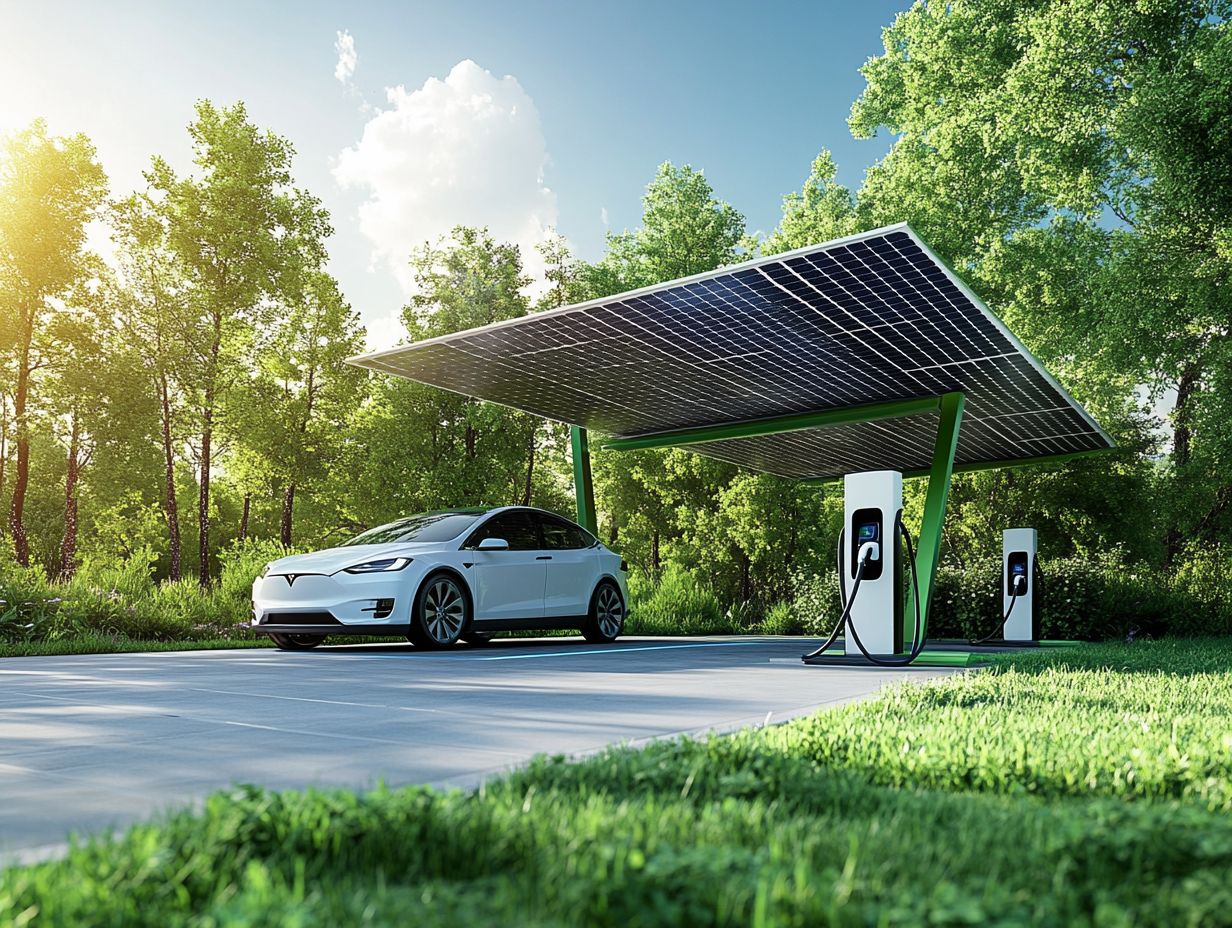
- Embrace EV charging to cut emissions and shrink your carbon footprint!
- The type of EV charging used and the source of electricity greatly affect the sustainability of EVs.
- Innovations and solutions are continually being developed to improve the sustainability of EV charging and address environmental concerns.
What is EV Charging?
EV charging is the process of replenishing the energy of your electric vehicle (EV) through specialized stations that deliver electricity to power your vehicle’s electric motors. This approach stands in stark contrast to traditional gasoline cars, which depend on fossil fuels.
The expansion of EV charging infrastructure is essential for supporting the widespread adoption of electric vehicles. It facilitates a shift towards clean transportation and reduces greenhouse gas emissions, which are gases that trap heat in the atmosphere.
Your charging options are varied and tailored to different needs, including Level 1, Level 2, and DC fast charging stations. Level 1 charging typically occurs at home using a standard outlet, making it perfect for overnight charging.
Level 2 stations offer a quicker solution for public and commercial use. If you’re in a hurry, DC fast chargers can provide significant range in just minutes, easing any range anxiety you may have.
By strategically positioning charging stations in urban areas, along highways, and at workplaces, a robust network not only encourages adoption but also instills confidence in electric vehicles as a viable alternative to traditional cars.
Environmental Impact of EV Charging
The environmental impact of EV charging is a crucial aspect of the broader conversation surrounding clean transportation. It highlights the intricate relationship between electricity consumption for electric vehicles and the corresponding greenhouse gas emissions.
While EVs themselves produce zero tailpipe emissions, the source of the electricity used for charging significantly influences their overall carbon footprint and their role in climate change.
Reducing Emissions and Carbon Footprint
Reducing emissions and the carbon footprint linked to electric vehicle charging is crucial for maximizing the climate benefits of transitioning to EVs. By harnessing renewable energy sources for electricity generation, you can significantly cut down on the carbon pollution associated with fossil fuels, ultimately enhancing the overall environmental quality of electric mobility.
To further boost electric vehicle efficiency, strategies like vehicle-to-grid (V2G) charging and advanced battery recycling techniques are gaining momentum. V2G systems allow your electric vehicle to return energy to the grid during peak demand times, effectively transforming your car into a storage unit for renewable energy. This innovation can help stabilize the grid and lessen reliance on fossil fuels. Take, for example, the Nissan Leaf, which has been leading the charge in V2G initiatives, enabling drivers like you to actively contribute to the energy ecosystem.
Meanwhile, companies such as Tesla are making impressive strides in battery recycling, working to reclaim valuable materials and reduce waste. This effort not only closes the loop on battery production and disposal but also showcases a commitment to sustainability. These cutting-edge approaches highlight how various EV models are not just vehicles; they’re active participants in the mission to reduce emissions and foster a cleaner environment.
Challenges and Concerns
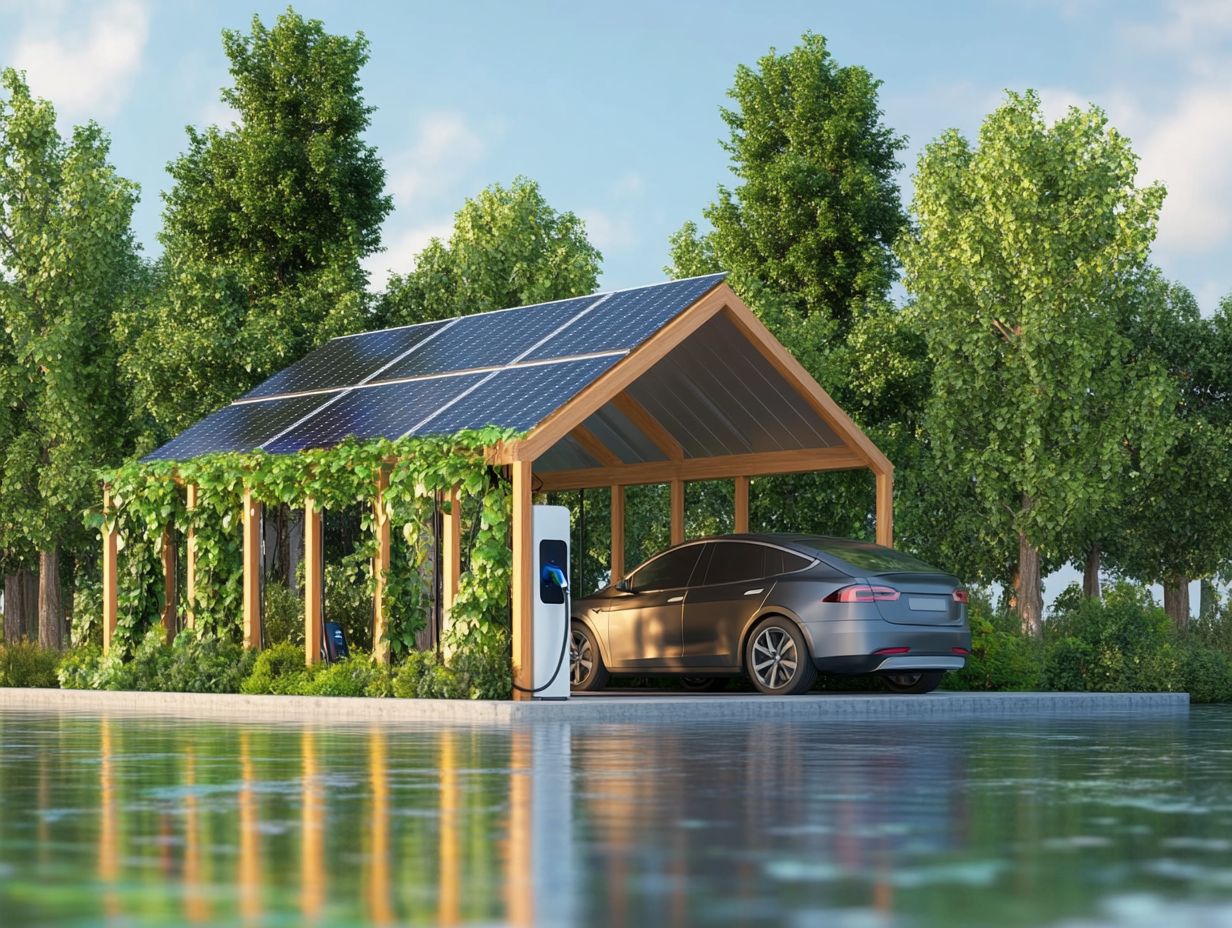
While the shift to electric vehicles presents numerous advantages, several challenges and concerns stand in the way of broader EV adoption, such as range anxiety and the current state of charging infrastructure. Many potential EV owners find themselves worried about the adequacy and reliability of charging stations, which can make them hesitant to move from internal combustion engines to electric mobility.
Many areas lack charging stations. This uneven distribution raises doubts about convenience and accessibility. It s crucial for the government to tackle these concerns directly, as they strive to enhance the existing infrastructure by investing in more publicly available charging points and offering incentives to encourage private sector participation.
Exciting advancements in battery technology and smart charging solutions hold the promise of improving vehicle reliability while optimizing charging times, helping to ease some of the anxiety associated with electric vehicle ownership. Such strategic developments could ultimately pave the way for a smoother transition toward a more sustainable transportation future.
Types of EV Charging
Wondering what type of EV charging is right for you? You ll encounter three primary types of EV charging: Level 1, Level 2, and DC Fast Charging, each tailored to meet the diverse needs of electric vehicle owners.
Level 1 charging uses typical home outlets, offering convenience but at a slower pace. In contrast, Level 2 charging stations, often located in public areas, deliver a faster charging experience.
DC Fast Charging is your go-to solution for rapid replenishment during long journeys, effectively easing range anxiety and facilitating a smooth electric mobility experience.
Level 1, Level 2, and DC Fast Charging
Level 1 charging uses typical home outlets, typically requiring you to charge overnight for most electric vehicle models. In contrast, Level 2 charging stations operate on 240 volts, delivering quicker charging times that are perfect for both home and public use.
If you’re looking for speed, DC Fast Charging stations can rapidly charge your EV batteries, making them ideal for long-distance travel and essential for an effective charging strategy.
Each of these options presents unique advantages tailored to your lifestyle and driving habits. For example, if you drive short distances daily, Level 1 charging is perfect for you just plug in overnight, and you ll wake up to a fully charged vehicle without incurring substantial energy costs.
On the other hand, if you live in the city and need to charge quickly between errands or at work, Level 2 chargers are your best bet. And let s not forget about the unmatched convenience of DC Fast Charging; it s a game-changer for road trips or those moments when you need a quick boost during longer journeys, drastically cutting down your downtime.
This flexibility in charging strategies truly enhances the convenience and overall experience of owning an electric vehicle.
Factors Affecting Environmental Impact
Several factors significantly influence the environmental impact of charging your electric vehicle, with the most critical consideration being the source of the electricity you use. The types of energy used to produce electricity in your region play a crucial role in determining whether charging your EV helps reduce emissions or inadvertently contributes to carbon pollution.
This underscores the vital need to expand charging infrastructure that prioritizes renewable energy sources, ensuring that your commitment to sustainability is genuinely impactful. For example, using solar or wind energy is better for the environment than coal.
Source of Electricity and Charging Infrastructure
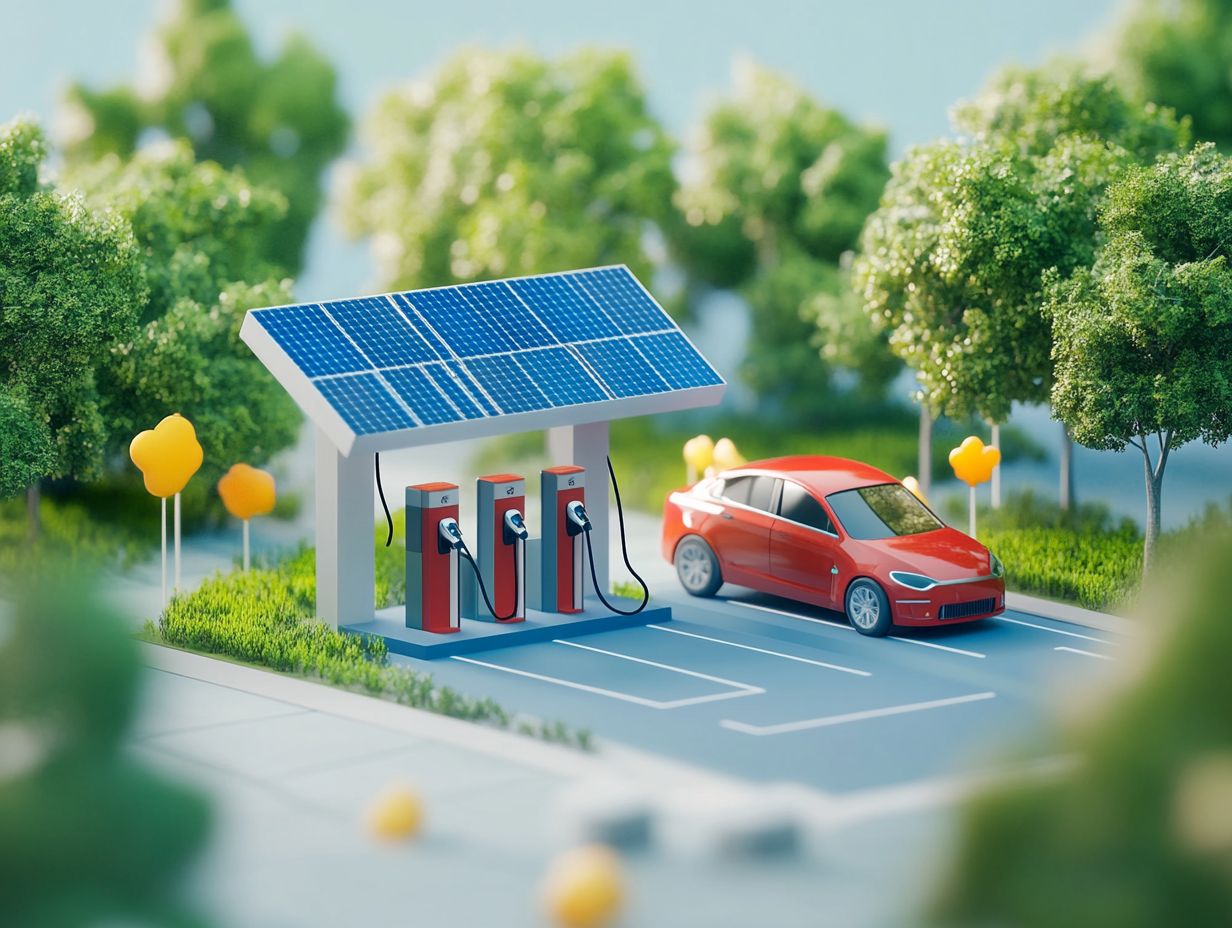
The source of electricity for your EV charging is crucial in shaping the environmental impact of electric mobility. It directly influences greenhouse gas emissions. By choosing renewable energy sources like solar and wind power, you can significantly reduce the impact on climate change associated with traditional fossil fuels.
Integrating these sustainable energy solutions into the U.S. power grid minimizes the overall carbon footprint of electric vehicle usage. This shift promotes a cleaner environment. Enhanced charging infrastructure makes accessing EV stations more convenient and encourages more people to embrace electric mobility.
This transition invites increased investments and innovation in renewable energy, fostering a more resilient energy landscape. Well-established charging networks streamline energy distribution, ensuring that available renewable energy meets the growing demand for electric vehicles.
Improving the Sustainability of EV Charging
You can boost the sustainability of EV charging by adopting innovative practices in battery manufacturing and recycling. This approach minimizes environmental impact while extending the lifecycle of electric vehicle batteries.
As technology advances, the industry is shifting toward more eco-friendly materials and processes. This effectively reduces carbon emissions linked to battery production. By embracing these changes, you contribute to a greener future and enhance the overall efficiency of electric vehicles.
Innovations and Solutions
Innovations and solutions in EV development are essential for enhancing the efficiency and sustainability of electric vehicle charging. Recent advancements in battery technology and energy storage solutions are significant in this field. Research from leading institutions like Argonne National Laboratory drives improvements in commonly used batteries for electric vehicles, resulting in longer lifespans and increased reliability.
Breakthroughs in emerging technologies, such as solid-state batteries, are paving the way for higher energy density and enhanced safety. As these advancements unfold, the implications for your EV charging infrastructure are transformative, leading to faster charging times and more robust energy systems.
Partnerships between manufacturers and researchers are vital in this landscape. Government initiatives provide critical funding and policy support necessary for collaboration. These partnerships are crucial for creating a greener future, where efficient energy storage systems can meet the rising demand for electric vehicles and ensure a smoother transition to sustainable transportation.
Frequently Asked Questions
What is the environmental impact of EV charging?
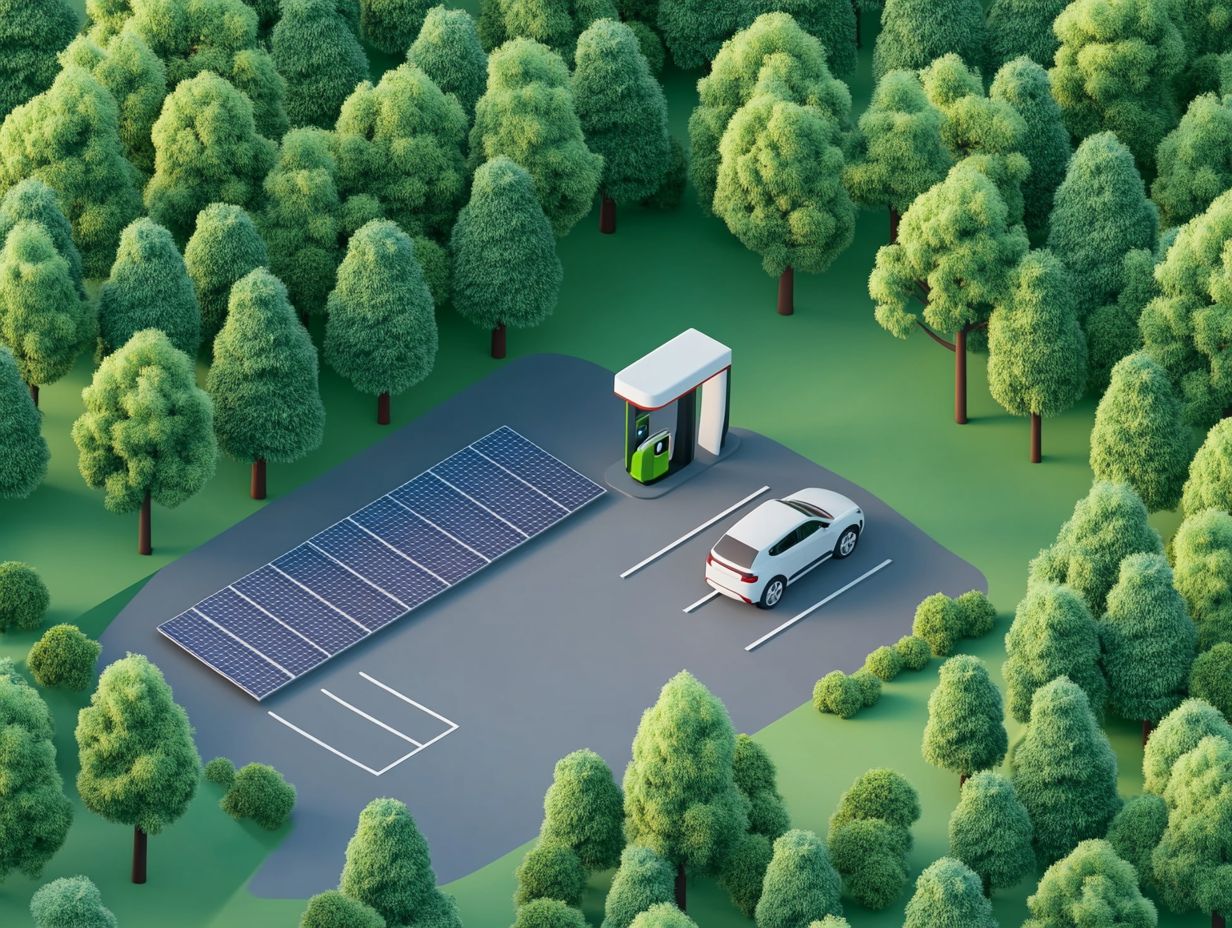
The environmental impact of EV charging refers to how charging electric vehicles affects the environment, including air quality, energy usage, and carbon emissions. Understanding this impact can help us make better choices for a sustainable future.
How does charging an EV affect air quality?
Charging an EV does not directly emit any pollutants into the air. However, the electricity used for charging may produce emissions, depending on its source.
What is the difference between charging an EV at home and at a public charging station?
Charging an EV at home typically has a lower environmental impact since it allows for the use of renewable energy sources, such as solar panels. In contrast, public charging stations may rely on non-renewable energy, resulting in a higher environmental impact.
Can EV charging increase the demand for electricity?
Yes, EV charging does contribute to the overall demand for electricity. However, as renewable energy sources become more prevalent, the environmental impact of this demand is decreasing.
Are there any benefits to the environment from using EVs?
Yes, EVs have a lower impact on the environment compared to traditional gasoline-powered vehicles. They produce zero emissions and can help reduce air pollution and greenhouse gas emissions.
What is the lifecycle environmental impact of EVs?
The lifecycle environmental impact of EVs takes into account the production, use, and disposal of the vehicle. While the production of EVs may have a higher impact, their use and disposal have a lower impact compared to gasoline-powered vehicles.

